A long time ago when there were no dikes yet, settlements in the Dutch Province of Friesland were built on artificial dwellings up to 15 metres high to protect the settlement from the floods in times the sea level rose. These mounds in Friesland were called ‘terpen’. Around the year 1200 the people started to build dikes, which made it less necessary to build a ‘terp’. During the 18th and 19th century many of them were destroyed and the fertile soil used on farm land. The earth contained lots of rubbish and personal waste during centuries. There are however still several of them left. The highest ‘terp’ still existing is the one of the tiny village of Hegebeintum, which is 8,8 metres high. The protected village only has about 90 inhabitants, but has some interesting features.
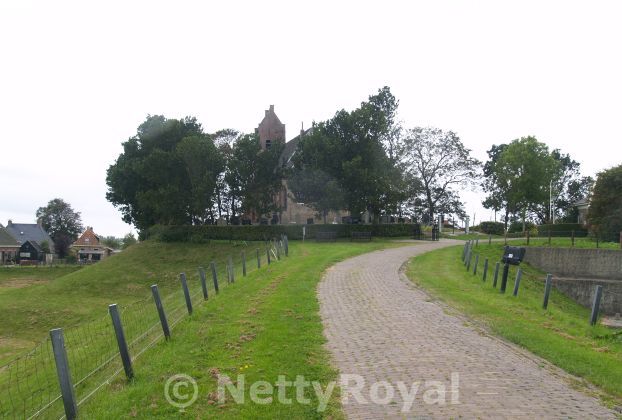
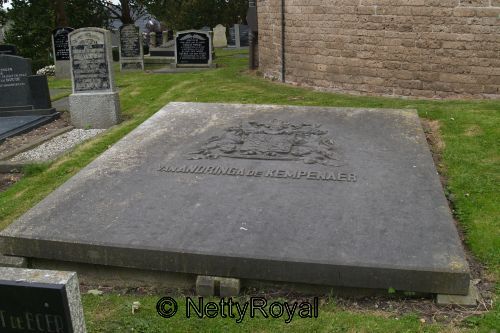
On top of the ‘terp’ is the church, at the bottom you find its visitor’s centre. The village might only be small, there is a ‘stins’ – a stronghold – nearby, the Harsta State. These estates belonged to noblemen or prominent citizens. Most of them unfortunately were demolished in the 19th century. The Harsta State however is still there and is a national heritage site nowadays. Next time I am in the neighbourhood I should actually have a look at it on the outside, as it is a private property. The few times I was in Hegebeintum I only visited the church. The 12th century church has a rather rich interior for such a small village. No wonder, as of course the inhabitants of the Harsta State were buried here. They had their own wooden gentlemen’s bench, their own family vault, and inside the church you will find no less than 16 beautiful funerary hatchments with some of their names on it. Two wonderful gravestones from around 1760 mark the opening of the vault. The families buried in the church were Van Nijsten, Van Coehoorn and De Schepper. Outside the church is a huge tombstone with the name Van Andringa de Kempenaer on it, the last noble family to live at Hegebeintum in the early 20th century.
As off 1904 the ‘terp’ was temporarily an archaeological site. It was concluded it already existed in the 5th century BC. Lots of interesting items were found, and in cooperation with the Fries Museum in Leeuwarden, they can be seen at the visitor’s centre in Hegebeintum. One of the most beautiful finds was a 7th century fibula.
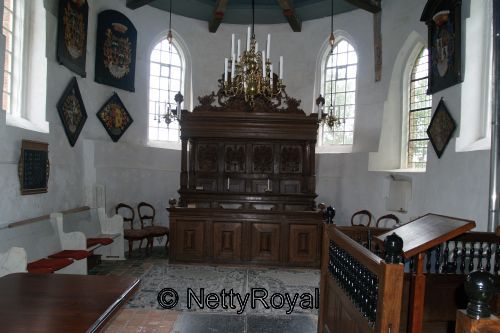
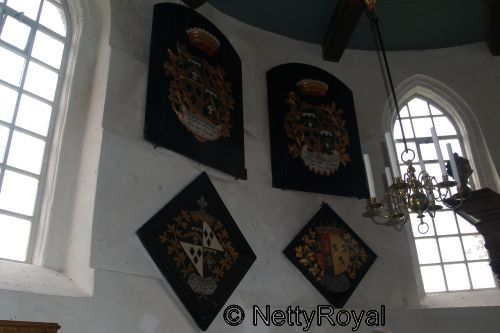
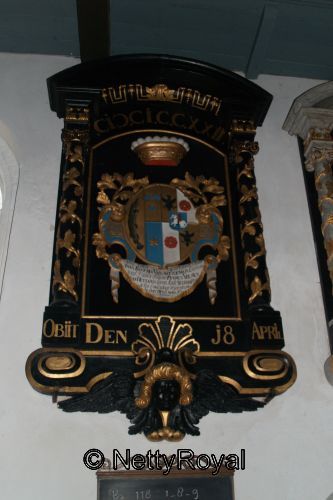
UPDATE: Funny that shortly after you have written a piece, you find something new. The Harsta State is for sale, for € 550.000. The eldest proof of its existance is from 1511. The building in its present state is from around 1843. It was fully restored in 1997 and a garage added. It has a lovely garden, a moat with special plants and trees. The house has six rooms (three bedrooms), three bathrooms and two separate toilets, two floors, a cellar and an attic. The fact that it is being sold also means there are picture online, so you can have a rather good look at it. The house doesn’t really look big, but very beautiful.
